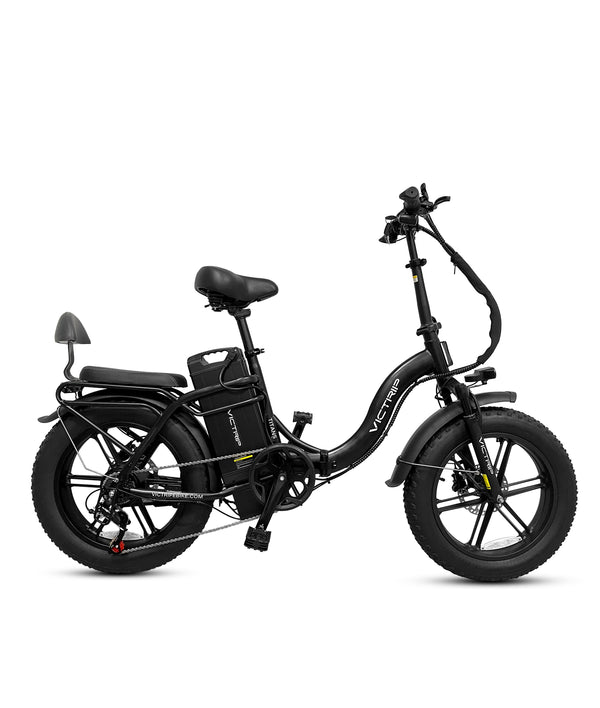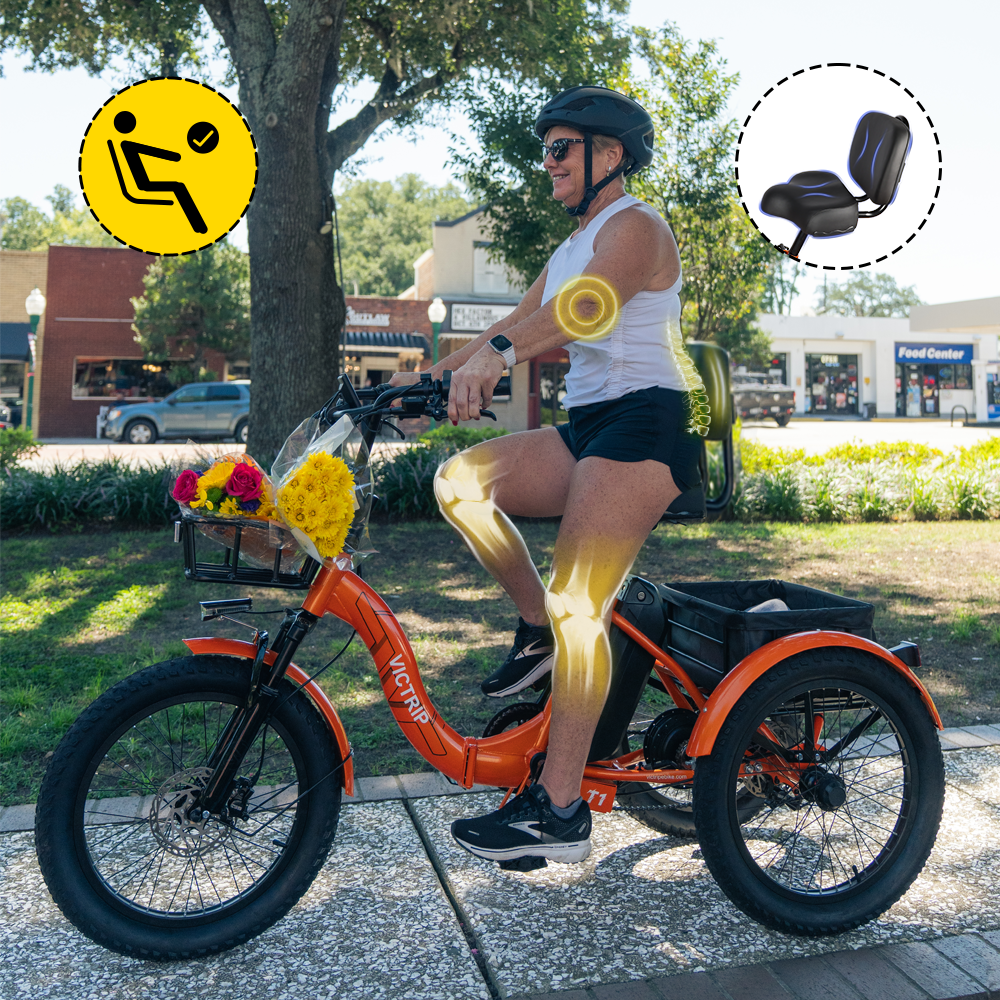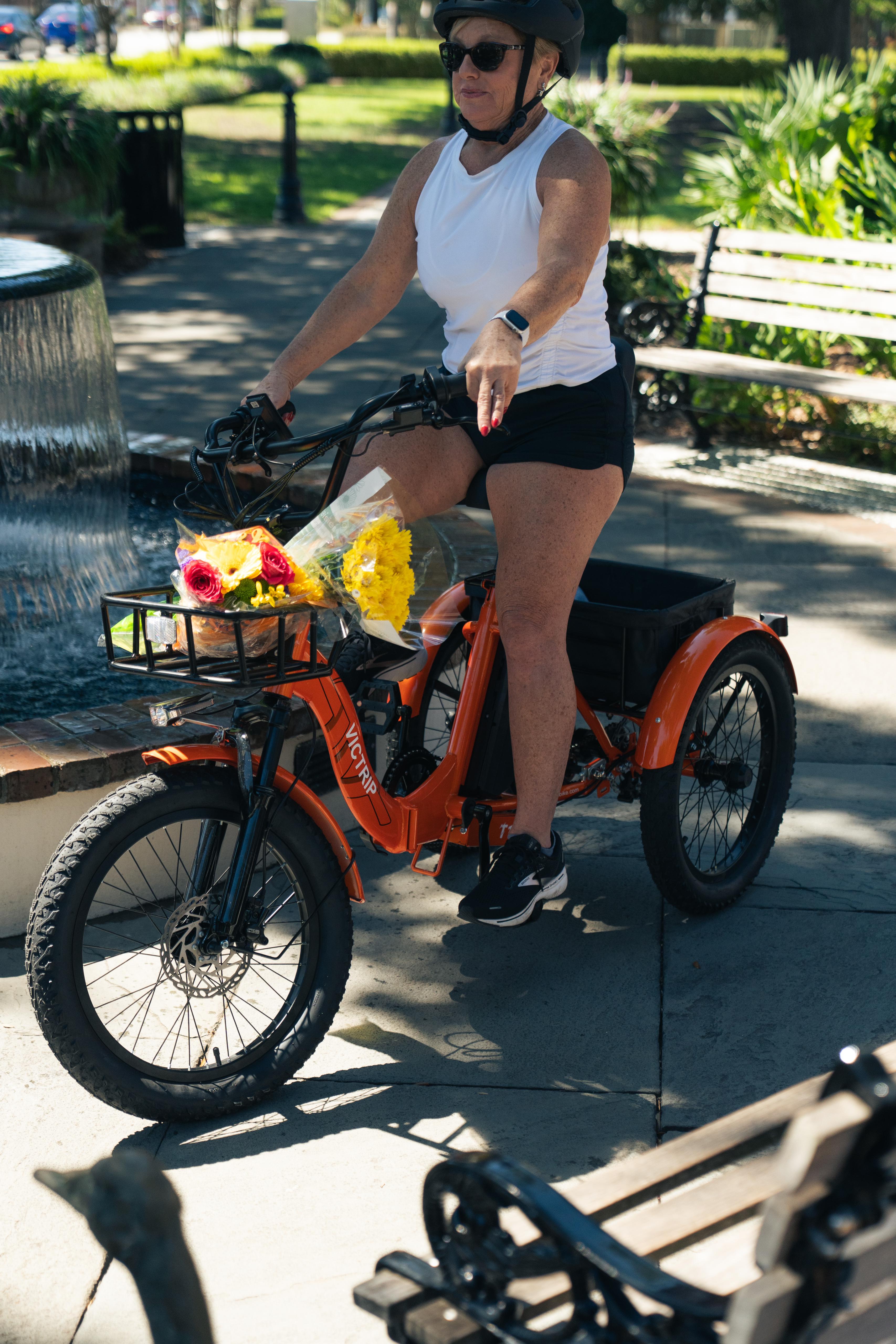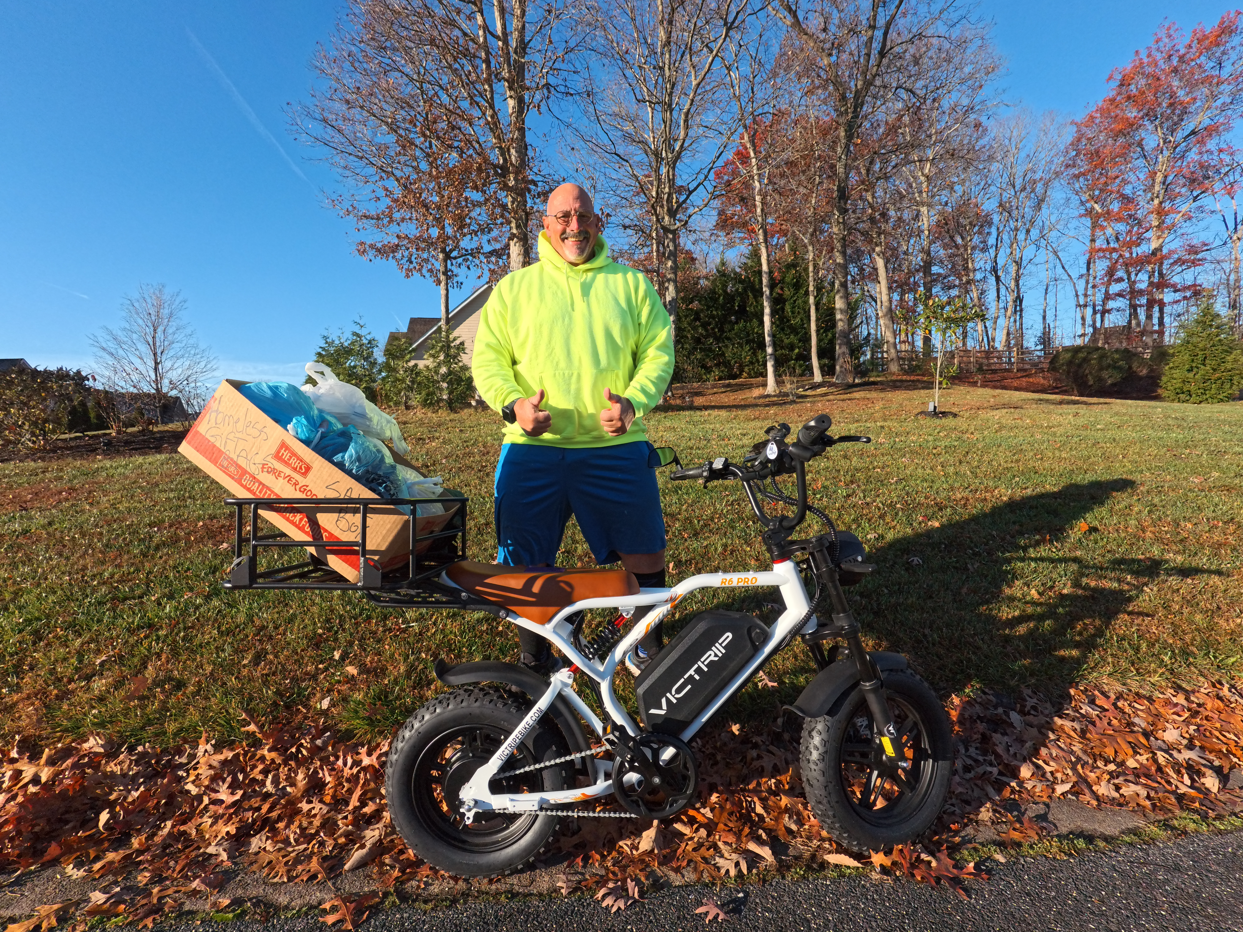
If you’re exploring the world of electric bikes, a 20 inch electric bike might just be the compact, versatile, and agile ride you’ve been looking for. Whether you live in a city apartment, need to fold and store your bike easily, or simply want a nimble commuter that doesn’t compromise on electric-assisted power, it deserves serious consideration. This guide will walk you through why a 20″ wheel matters, how it influences ride feel, what to check in motors and batteries, fit and sizing tips, and how to choose wisely — so you ride confidently and get every advantage. Let’s begin.
What defines a 20 inch electric bike?
When we talk about a “20 inch electric bike,” we’re referring to an electric-powered bicycle that uses 20-inch wheels (generally ISO 451 or 406 mm depending on rim specification) and is often designed with compact geometry. Unlike larger 26″ or 700C wheels, the 20″ configuration serves special niches: folding bikes, shorter riders, tight urban spaces, or multi-modal commutes (e.g., train + bike).
In a 20″ ebike you’ll typically find the full electric package: motor (hub or mid-drive), battery pack, pedal-assist system, display — but integrated into a smaller footprint. The smaller diameter means the ride dynamics differ somewhat from larger wheel bikes: more responsive, quicker off the line, and easier to manoeuvre, though with trade-offs in roll-over capability and perhaps long-haul efficiency.
Why go with a 20″ wheel? Key strengths
Choosing a 20″ wheel size brings several real advantages:
-
Compactness and storage ease. A smaller wheel size allows for shorter frames or folding designs; you can store the bike in tighter spaces, bring it inside more easily, and even fit it in trunks or under desks.
-
Faster acceleration and responsiveness. The lower rotational mass means when you start pedalling (or hit throttle/assist) the bike gets moving more quickly; great for stop-and-go urban traffic.
-
Lower standover height & better fit for shorter riders. The smaller wheel lets designers lower the frame, giving easier mounts and dismounts.
-
Agile handling in tight environments. The smaller footprint means tighter turning radius, easier weaving through traffic, or storing in compact parking.
-
Potentially lighter weight. Often 20″ ebikes are built to be compact, which can help keep overall weight down — improving portability when you need to carry or fold them.
In short, if you primarily ride in congested cities, use public transit, have limited storage, or are a shorter rider, the 20″ platform offers distinct benefits.

Who benefits most from a 20″ electric bike?
While any rider could use a 20″ ebike, these profiles stand to benefit the most:
-
Urban commuters who travel on mixed routes (roads, curb-cuts, train platforms) and may fold or store the bike indoors.
-
Apartment dwellers or condo residents where space is premium and indoor storage is preferred.
-
Shorter riders (e.g., under ~5’8” / 173 cm) who find high frames or large wheels intimidating or unwieldy.
-
Multi-modal travellers — someone who rides part of their commute, then boards transit or needs to carry the bike upstairs.
-
Light-cargo users or grocery riders who value nimbleness over long-haul speed.
-
Folding Ebike enthusiasts who want electric assist in a compact package.
If you're a long-distance tourer, heavy-cargo hauler, or off-road adventurer regularly pushing 50+ miles or packing heavy loads, you might find the limitations of a 20″ wheel more relevant—but for many riders, the trade-off is worthwhile.
Core components of a 20″ e-bike
When evaluating a 20″ electric bike, it’s useful to break down the key components:
-
Frame & fork: Typically shorter top-tube, lower step-over; may include folding mechanism or compact geometry. Materials range from steel to aluminum to carbon (in high-end models).
-
Wheelset & tires: 20″ rim size, tire widths often 1.75″ to 2.4″ in commuter use; wider tires improve comfort on smaller wheels.
-
Drivetrain: Options vary from single-speed hubs, hub-geared models, to 8-12 speed derailleur systems — smaller wheels mean gears need to be optimized for acceleration and modest cruising.
-
Motor: Hub or mid-drive; power ratings from 250 W up to 500 W+ depending on region and classification.
-
Battery pack: Often mounted on down tube, rear rack or under the rear seat; capacity measured in watt-hours (Wh).
-
Brakes & controls: Because of faster acceleration relative to size, strong braking (preferably hydraulic disc) is important. Displays show battery charge, assist level, set speed, etc.
-
Accessories & add-ons: Fenders, racks, lights, folding hinges (if applicable) — these become important for practical daily use.
Understanding these parts helps you compare models effectively and match features to your needs.
Motor options: placement & performance
When it comes to motor design on 20″ ebikes, the two primary options are:
Hub motors: These mount in the front or rear wheel hub. They are simpler, often less expensive, and require less drivetrain interaction. On a 20″ bike, a rear-hub motor is common, offering direct push and good value for urban riders.
Mid-drive motors: These sit at the crank and drive through the bike’s gearing. The advantage is better torque, improved hill climbing, and more efficient battery use since the motor benefits from gearing. On a 20″ wheel, this can compensate somewhat for smaller wheel inertia. The downsides: greater complexity, more maintenance, and higher cost.
What you feel:
-
A hub motor may feel like a strong push from behind — good for flat terrain and casual commuting.
-
A mid-drive tends to feel more like part of the ride — smoother assist, better climbing power, and more natural pedal feel.
Sizing considerations: -
If you live in a hilly region or carry frequent loads, a stronger motor (350 W–500 W+) or mid-drive may make sense.
-
If your route is mostly flat and you prioritise value & compactness, a 250 W hub motor is often sufficient.
Battery & range: what to expect
The battery defines how far and how reliably your ride will go.
Capacity measurement: Watt-hours (Wh). Example: a 400 Wh battery might be 36 V × 11.1 Ah, etc.
Real-world range factors:
-
Motor power & assist level: higher assist = more battery draw.
-
Rider weight + cargo weight.
-
Terrain: hills, stops, start/stop traffic reduce range.
-
Wheel size/rolling resistance: smaller wheels may have slightly higher rolling resistance under certain conditions, but tyre choice mitigates that.
Typical range estimates: On a well-optimized 20″ ebike with a 400 Wh battery, moderate assist, and flat terrain: you might expect 25–50 miles. On high assist, hills, heavy load: maybe 15–20 miles.
Battery care tips:
-
Keep it charged — frequent shallow cycles often better than deep discharge.
-
Store at ~40-60% charge if not used for weeks.
-
Avoid extreme heat or cold which degrades lithium batteries.
-
Remove battery when storing the bike for long periods or in shared indoor spaces (for security/ventilation).
Fit, ergonomics & sizing for 20″ bikes
Even though wheel size is smaller, fit still matters tremendously.
-
Standover height: Thanks to small wheels, many frames allow lower standover, meaning shorter riders or those who prefer easy mounting benefit.
-
Reach & handlebar height: Make sure the bike’s geometry fits your torso and arms. A compact frame doesn’t always guarantee good fit for taller riders.
-
Saddle height & crank length: Shorter cranks (e.g., 165 mm) help avoid pedal strike in compact frame designs. Adjust saddle so your leg extension at full pedal is comfortable.
-
Test-ride when possible: Because geometry matters more than just wheel size. A rider with a long upper body may feel cramped.
-
Foldability / portability factor: If the bike folds, check hinge quality, quick-release mechanisms, folded size and weight for lifting/storing.
Read More: Ebike Frame Size Guide: Finding Your Perfect Fit.
Ride performance: speed, handling, terrain
How does a 20″ electric bike ride?
-
Speed: Many ebikes are limited by motor classification (e.g., 20 mph / 25 km/h). A 20″ wheel doesn’t inherently slow you down if the motor and gearing are well‐matched.
-
Acceleration: Because of smaller rotational mass and tighter geometry, you’ll often feel rapid off-the-line pace — excellent in urban commuting.
-
Handling: Very agile in tight turns, urban weaving, storage. However at high speeds or rough terrain, smaller wheels may feel less stable compared to larger wheel bikes. Larger wheels smooth out bumps better and carry inertia more comfortably.
-
Terrain & load: If riding hilly terrain often, or carrying heavy loads, you’ll want a stronger drive system and consider how smaller wheels handle increased stress and bumps. Wider tyres, suspension forks, and good quality components help mitigate downsides.

Safety features: brakes, tires & suspension
Small wheels call for strong safety design.
-
Brakes: Hydraulic disc brakes are ideal because they offer consistent stopping power and better modulation — especially important with quick-acceleration 20″ bikes and urban use in wet conditions. Mechanical discs are okay but need frequent adjustment.
-
Tires & width: Choose wider tyres (2.0″–2.4″) if your frame allows; they help absorb bumps and improve comfort. Make sure the tyres are rated for e-bike speeds and assist loads.
-
Suspension: While many 20″ bikes may have rigid forks to reduce weight, if you ride rough roads, a front suspension (even 50–75 mm travel) or suspension seatpost can greatly improve comfort.
-
Visibility & lighting: Given urban use, integrated lights, reflective surfaces, and durable fenders help with safety.
-
Stability considerations: Because the geometry is compact, when fully loaded you may feel less stable than a larger bike — distribute weight low and central, use racks designed for 20″ bikes, and avoid excessive rear-only braking.
Legal & regulatory aspects you need to know
Regulations differ widely across regions — but here are general points:
-
United States: Many states adopt a class system (Class 1: pedal-assist to 20 mph; Class 2: throttle + assist to 20 mph; Class 3: pedal-assist to 28 mph). These affect where you can ride (bike paths vs roads).
-
European Union / UK: Typically pedelecs up to 25 km/h (15.5 mph) and 250 W motor do not require registration or license. Anything above might be classified as a moped or require insurance.
-
Transit & multi-modal rules: Some trains or buses restrict battery size, folded dimensions, or weight for bikes — make sure your 20″ ebike fits the policies of your local transit.
-
Local municipal bike path rules: Some paths may restrict throttle-only bikes or certain classes — check signage or local authority websites.
-
Tip: Always keep your bike’s specification sheet and serial number handy. If authorities ask, you can show that your bike meets legal classification for your area.
Maintenance checklist & common issues
Keeping your 20″ electric bike in good shape extends its life and performance.
Routine checks (weekly):
-
Tire pressure and condition (look for wear, bulges, cuts).
-
Brakes: pad wear, rotor alignment, lever feel.
-
Battery charge level and correct mounting (no loose connectors).
-
Frame bolts, folding mechanism (if present) should be secure.
-
Clean the bike — especially the drivetrain to reduce wear.
Monthly / three-monthly:
-
Lubricate chain or gear system (especially if exposed to wet or salty conditions).
-
Check wheel true and hub bearings because smaller wheels may demand tighter tolerances.
-
Inspect wiring and connectors to motor and display; smaller frames may have more bends so check for chafing.
-
Update firmware (if applicable) or check for motor calibration issues.
Common issues & fixes:
-
Shorter range: may be due to battery aging, heavy load, or high assist mode — try lower assist and reduce weight.
-
Pedal strike or clearance issues: In compact frames with 20″ wheels, ensure cranks are not too long; shorter cranks help.
-
Folding mechanism play: Over time hinges may loosen — tighten bolts to torque spec and apply grease if needed.
-
Braking fade or weak feel in wet: Upgrade to quality hydraulic discs, ensure rotors and pads are correct size for the load.
Buying strategy: what to look for
Here’s how to choose a quality 20″ electric bike:
Pre-purchase checklist:
-
Wheel size: Ensure true 20″ specification and compatible tyre/inner tube availability.
-
Motor: Choose appropriate power & placement (hub vs mid-drive).
-
Battery: Capacity, brand, chargeable location (removable vs fixed), warranty.
-
Brakes: Prefer hydraulic disc; check rotor size and brand if possible.
-
Fit & geometry: Match your height, inseam, reach. Test ride if possible.
-
Foldability and portability: If the bike is folding, assess folded size, weight, ease-of-release.
-
Service & parts availability: Especially for non-standard wheel sizes.
-
Warranty & support: Battery and motor warranties matter.
Comparison table (example):
| Feature | Entry-Level 20″ e-bike | Mid-Range 20″ e-bike | Premium 20″ e-bike |
|---|---|---|---|
| Motor | 250 W hub | 350–500 W hub or small mid-drive | 500 W+ mid-drive with torque sensor |
| Battery | 300–400 Wh | 400–550 Wh | 550–720 Wh or dual-pack |
| Brakes | Mechanical disc | Hydraulic disc standard | Large-rotor hydraulic + upgrade |
| Weight | ~18–22 kg | ~15–19 kg | ~13–17 kg (high quality materials) |
| Fold / Storage | Fixed frame or simple fold | Good fold & portability | Lightweight folding high-end design |
Use this table to benchmark models you’re considering, while remembering your personal use-case and budget.
TOP PICK

VICTRIP®TITAN S 1000W Ebike
$1,499.00
Useful accessories to enhance your ride
To maximise your 20″ ebike’s utility and longevity, consider:
-
High-quality lock or U-lock + cable combo for urban security.
-
Bright front and rear lights, ideally integrated into the bike’s system or rechargeable.
-
Fenders/mudguards to protect you and your bike when riding in wet weather.
-
Rack and panniers — even compact 20″ frames can benefit from rear racks for commuting or shopping.
-
High-volume commuter tyres (e.g., 2.0″ width) for added comfort and durability on smaller wheels.
-
Spare charger or multi-traveler kit, especially if you use transit or ride away from home.
-
Helmet and high-visibility gear — city riding demands awareness and protection.
Pros vs cons: quick comparison
Pros:
-
Compact footprint, easier to store and handle.
-
Quick off-the-line acceleration and agile handling.
-
Lower standover height, friendly for shorter or less confident riders.
-
Often more affordable for a given level of motor/battery because size constraints force efficiency.
Cons:
-
Slightly less roll-over comfort compared with larger wheels (e.g., bigger bumps may feel sharper).
-
At higher speeds and over rough terrain, may feel less stable or smooth than larger-wheel bikes.
-
Smaller wheel sizes sometimes mean non-standard tyres/fittings and harder to source replacements in some regions.
-
Less inertia for long-distance cruising or heavy cargo without strong motor support.
Conclusion: final advice & next steps
If you’re after a compact, agile electric bike that handles city commuting, storage challenges, and short-to-mid-distance riding with ease, a 20 inch electric bike is a highly capable option. Focus your decision on motor power and type (hub vs mid-drive) tailored to your terrain and load needs, pick a battery capacity that supports your typical range, and ensure the frame geometry fits your height and riding style. Prioritise good brakes, quality tyres, and service support — especially since smaller wheel sizes sometimes bring non-standard parts. Once you’ve test-ridden and matched features to use case, you’ll likely find the smaller size is a liberating choice rather than a compromise.
FAQs
Are 20″ electric bikes slower than bikes with larger wheels?
Not inherently. The top speed is predominantly set by motor power, gearing, and electronic limiters rather than wheel size. A well-matched 20″ ebike can keep pace with larger-wheeled bikes in urban settings. The smaller wheel may slightly raise pedal cadence at high speed, but for most commuting the difference is negligible.
Can a tall rider use a 20″ electric bike comfortably?
Yes — if the frame geometry, reach, and seatpost height are compatible. The small wheel size gives a lower standover, which can be beneficial, but very tall riders should test to ensure they feel comfortable and not cramped.
How much range should I expect from a 20″ ebike battery?
It depends on battery capacity, assist level, terrain, rider weight, and speed. For example, a 400 Wh battery on moderate assist might give 25–50 miles in favourable conditions, but real-world range could be lower if conditions are tougher.
Are replacement tyres and tubes for 20″ ebikes easy to find?
Generally yes — 20″ is a common size in folding bikes and some youth bikes, so tyres and tubes are available. However, some niche widths (e.g., very fat tyres) may be less common in local shops. Always check compatibility and availability in your region.




Share:
25 MPH Vs 30 MPH Electric Bike: Which One Is Right for You?
The Ultimate Guide to eBike Brake Pads: Types, Maintenance, and Replacement Tips